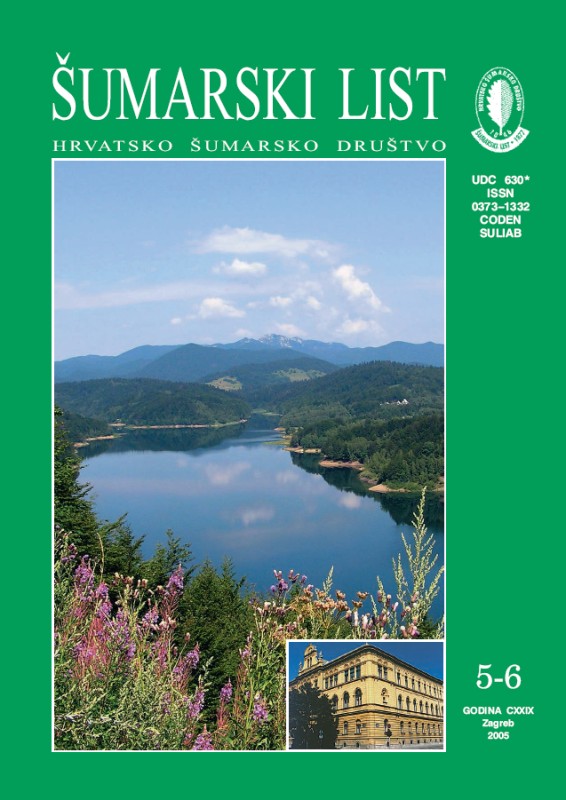
broj: 5-6/2005
pdf (29,9 MB) |
|
||||||||||||||
| IZVORNI ZNANSTVENI ČLANCI | ||
| Orlić, S., S. Perić | UDK 630* 232.1 (001) | |
| Study of Growth of Douglas Fir Provenances (Pseudotsuga menziesii (Mirb.) Franco) on Krndija pdf HR EN | 243 | |
| Križanec, R. | UDK 630* 228 + 561 (001) | |
| Transition Time as an Indicator of Changes in the Development of Forest Stands of Selection Silvicultural Form pdf HR EN | 251 | |
| Pernek, M., I. Pilaš | UDK 630* 453 (001) | |
| Gradations of Gypsy Moth - Lymantria dispar L. (Lep., Lymantriidae) in Croatia pdf HR EN | 263 | |
| SUMMARY: Gypsy moth – Lymantria dispar L. (Lep., Lymantriidae) represents one of the most significant pest on oak in Croatia. As a defoliator it was known as early 18th century, when the first total defoliation on larger areas were recordet. Investigation of Klepac and Spaić (1965) showed that the lose of the increment of pedunculate oak amount 30 % which means enormous financial loses. The severe gradations of gypsy moth in the last century occured in the continental part of Croatia 1948–1950, 1962–1966, 1970–1975, 1982–1984 and 1992–1994. While the gradation in the mediterian part has been increased in the continental part they droped. For the good forest protection work it is very importend to have good prognosis. The aim of this paper is to show how a easy statistical analysis can be used for this purpose. During the last 30 years Gypsy Moth has been intensively monitored and the data have been sent to the Diagnostic-Prognostic Centre (DPC) placed in the Forestry Research Institute Jastrebarsko. Counting of every founded egg masses on a line trough a oak forest receivse the intensity of attack. Five diffrent classes of attack are differentiated: < 1 % (Class 1); 1-5 % (Class 2); 5-20 % (Class 3), 20-50 % (Class 4), > 50 % (Class 5). For the satistical analysis we use the method of moving average and spectral analysis (Statsoft Statistica ® 5.5). The results shows that the trend for Class 1 and Class 2 is positiv, but negative for Classes 3, 4 and 5. The spectral analysis using Fast Furier Method confirmed that weak attacks occur every 8 years, while more severe attacks every 10 years. Operational data indicate that the intensification of attacks can be expected in 2005 but in weaker intensity than 10 years ago. The reason for that phenomenon should be disscused. The last gypsy moth gradation has been fight whit insecticides but the same were be done whit other pest so it couldn´t be the reason for the weaker intensity. Climatic changes could be the most serious reason. Key words: gypsy moth; Lymantria dispar; population; pedunculate oak; Quercus robur; Fast Furier method; Moving average | ||
| PRETHODNO PRIOPĆENJE | ||
| Kajba, D., I. Anić, D. Pfeifer | UDK 630* 165 (Populus nigra L.) | |
| Sustainability and Conservation of Genetic Resources with a Focus on the European Black Poplar (Populus Nigra L.) pdf HR EN | 271 | |
| PREGLEDNI ČLANCI | ||
| Meštrić, B. | UDK 630* 945.1 | |
| Forestry Journal - Bibliographic Database and Its Presentation pdf HR EN | 279 | |
| Šporčić, M. | UDK 630* 641 | |
| Insight Into Some Aspects of Entrepreneurship in the European Forestry pdf HR EN | 287 | |


